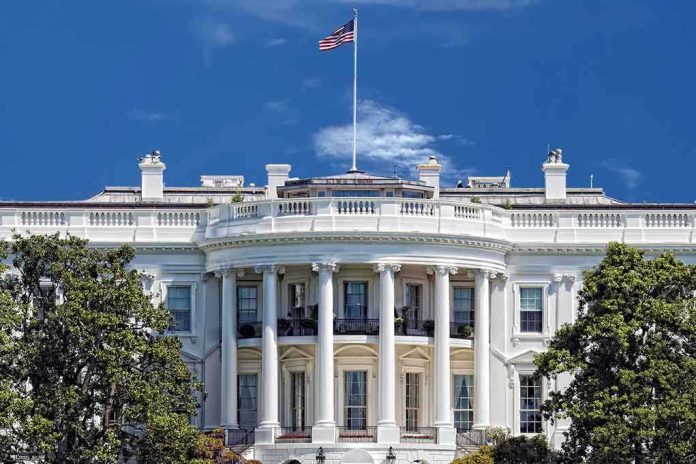
President Trump just fired an entire century-old federal commission to clear the path for his $300 million White House ballroom dreams—and the precedent this sets could reshape how America builds its monuments forever.
Story Snapshot
- Trump dismissed all six members of the Commission of Fine Arts, the independent body that reviews federal building aesthetics in Washington DC
- The unprecedented mass firing clears potential obstacles for Trump’s proposed $300 million White House ballroom and triumphal arch projects
- New appointees will be selected to align with Trump’s “America First” policies and classical architecture mandate
- The move marks the first time in the commission’s 115-year history that an entire board has been wholesale dismissed
The Nuclear Option for Presidential Architecture
On October 28, 2025, six arts and architecture experts received termination notices that would make any federal employee’s blood run cold. The Commission of Fine Arts, established in 1910 to safeguard the aesthetic integrity of the nation’s capital, found itself completely gutted in a single day. Bruce Redman Becker, Peter D. Cook, Lisa E. Delplace, Bill J. Lenihan, Justin Garrett Moore, and Hazel Ruth Edwards—all Biden appointees—were shown the door with immediate effect.
The timing reveals everything about Trump’s strategy. These commissioners would have been the gatekeepers reviewing his grandiose construction plans, including a massive new White House ballroom that carries a price tag rivaling a small country’s GDP. Rather than risk rejection or modification of his architectural vision, Trump chose the nuclear option.
A Commission That Actually Mattered
The Commission of Fine Arts operates differently from typical Washington bureaucracy. Its six unpaid members serve as the final arbiters of taste for federal buildings, memorials, and public spaces in the capital. They possess the rare power to tell presidents, “No, that design doesn’t reflect American dignity.” For over a century, this body maintained independence from political whims, focusing solely on aesthetic and cultural appropriateness.
Dismissed member Bruce Becker captured the commission’s true significance when he noted it “plays an important role in shaping the way the public experiences our nation’s capital and the historic buildings it contains, which serve as symbols of our democracy.” Translation: these buildings aren’t just structures—they’re America’s architectural autobiography, and someone needs to ensure we don’t write embarrassing chapters.
The Ballroom That Broke the System
Trump’s $300 million White House ballroom represents more than extravagant entertaining space—it symbolizes his vision of American grandeur. Paired with plans for a triumphal arch, these projects would fundamentally alter the nation’s most recognizable residence. The scale and expense dwarf typical federal construction, making commission approval crucial for legitimacy and public acceptance.
The White House made no secret of its intentions, announcing that new appointees will “align more closely with President Trump’s ‘America First’ policies.” This unprecedented transparency about political litmus tests for supposedly independent positions signals a broader transformation of federal cultural institutions. Trump’s August 2025 executive order mandating classical architecture styles for federal buildings already set the stage—now he’s installing the personnel to enforce his aesthetic revolution.
Precedent That Could Reshape Federal Independence
The mass firing establishes dangerous precedent for independent federal commissions across government. While presidents possess statutory authority to appoint and remove commission members, wholesale dismissal of entire boards remained taboo until now. This action joins Trump’s previous purges of the Kennedy Center board and attempts to influence Smithsonian leadership, revealing a systematic campaign to politicize cultural institutions.
The immediate impact stalls all federal construction reviews in Washington DC, creating a bottleneck that will persist until new commissioners are confirmed. But the long-term consequences could prove far more significant. Future presidents may follow Trump’s example, treating independent oversight bodies as obstacles to eliminate rather than essential checks on executive power. The next commission meeting scheduled for November 20, 2025, will likely rubber-stamp projects the previous board might have rejected or modified.
Sources:
President Trump fires Commission of Fine Arts members










